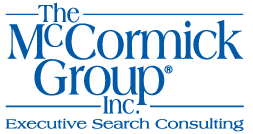
This article was originally published in the Legal Administrator Daily and was written by J. David Harvey. David Ris, Principal, was asked to provide a quote as an expert in the field. If you would like to reach David Ris, please contact him at (703) 312-6750 or dris@tmg-dc.com.
The lateral market — attorneys moving from one firm to another — continues to be red hot. Widespread acceptance of remote working has opened up new possibilities for those candidates who are not physically in the major markets. “We have not seen this level of lateral move activity in many years,” said David Ris, a recruiter at the McCormick Group. “Further, the pace of government lawyers moving to private practice is well above what we typically see following a change in administration.” Yet the hiring process is still fraught with danger, with red flags lurking behind the scenes; often not caught before the new partner joins the firm. As I wrote this time last year, the chance that your new partner will be with the firm in two years from the starting time is a coin flip — 50/50.
In Washington, DC, where I am based, we often see the phenomenon of big-name, no business. These are frequently new partners who had important titles at some of the major agencies in Washington: Department of Justice, Department of Commerce, Treasury. But unfortunately, most of the candidates coming from government have no business development experience and typically underestimate the difficulty of translating their reputation into leads and converting those into new business.
What can be done to help the new lateral succeed? Following the important integration steps I’ve written about previously, a combination of coaching and training can make a significant difference — translating into new leads and billable new business. There are two main options that can be combined or handled separately depending on the situation:
- Group Training or Workshop
- Individual Coaching
Group Training
If your firm has a steady stream of new laterals, group training can be a cost-effective way to educate and motivate new partners. Relationship building, target markets, value propositions, client growth, and new business development are topics that are typically the focus of group training. Workshops, either remote or in-person, are delivered by experts. Some firms with large in-house marketing and professional development teams can deliver this type of content in-house, but more typically, it is provided by an outside consultant or consulting group with experienced sales and business development professionals who are skilled trainers.
The trainers work with the firm’s lawyers to improve their skills and their commitment to winning new business, retaining existing clients, and enabling those clients to entrust the firm with more work. Lawyers learn concepts, processes, and practical steps of selling, enabling them to confidently pursue new business opportunities and build firm revenues. This is what the government lateral was never taught in law school and certainly not at the DOJ!
Using an outside trainer for this type of activity typically costs less than $30K if structured over several lunches or a half-day program. Prior to COVID, these programs were delivered in person but going forward, they are likely to be via videoconference unless the trainer is in the same location as the attorneys. One disadvantage of going this route is that one session may not foster the type of habits needed to sustain ongoing business development skills. That is why it’s important to consider follow-on individual coaching to supplement the training (see below).
Individual Coaching
Great players have great coaches. This goes for lawyers as well as baseball players! Similar to the Steven Covey focus on “7 Habits of Effective People,” the individual coaching helps to build important habits around relationship-building, client retention, and growth. As with group coaching, this type of program should be delivered by a team of experts who are former professional services sales professionals and/or experienced law firm coaches.
A coaching program based on the LawVision model would facilitate and teach a rigorous business development process with step-by-step implementation strategies. These are usually conducted through one-on-one coaching with a series of business development tools in a monthly follow-up format. Topics may include:
- Assessing the current knowledge, skills, and needs of the lawyer
- Identifying and maximizing key contacts
- Planning an individualized program for refinement of skills and to drive business development results
- Leveraging strengths and personal brand
- Defining target markets
- Creating value propositions
- Asking for business and overcoming objections
- Forecasting sales revenue
An important component of individual coaching is tools that have been developed to help track and monitor progress. While a pipeline report may seem like an obvious one, the discussion that goes into each prospect/client opportunity between the coach and the attorney is where the rubber meets the road. Is there an opportunity to meet the contact at an upcoming industry conference? Is it the right time to offer a CLE? What has the lawyer seen in the market that would be of value to share? Having focused time on these questions allows the lawyer to spend energy on what will move the needle, propelling her/his business development efforts forward.
The combination of training and coaching is often a powerful one because the training introduces the important concepts, while the coaching builds effective habits. Each firm can tailor its program based on both in-house resources and the pace of hiring. The important thing is to invest time and energy into a fast start for the lateral who has much potential but a limited runway to develop business for the firm. A well-honed coaching program is a great way to make sure your firm is in the winning column when it comes to the 50/50 chance the lateral will be a success!

